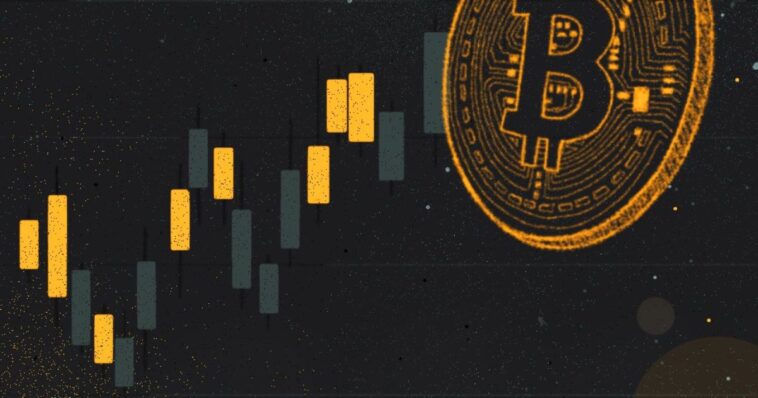According to Bloomberg, bitcoin’s 9 million percent price rise makes it the best performing asset of the last decade. But what if I told you that even in 2021, Bitcoin is still one of the most undervalued assets there is?
If you are one of those people who has thought of putting money into bitcoin, but just could not pull the trigger, then you are not alone.
The crypto community today is flooded with people who, unfortunately, do not understand the fundamentals lying behind these digital assets. And because bitcoin has amassed a significant following of these “weak hands,” institutions and principal investors may become more cautious when it comes to putting money into bitcoin.
When they see that people do not agree on basic questions like “What gives Bitcoin its value?” and “How does Bitcoin derive its worth?,” it creates uncertainty, and they could become reluctant to go all in.
The question of the value of bitcoin is very general and multifaceted. There are two ways to explain this. One is the traditional way, which describes bitcoin’s value in terms of the power that goes into mining.
But here I want to touch the other side of the coin. The side that is not discussed as often. And that has to do with our current financial system.
Elon Musk has already said that cryptocurrencies will be the media of exchange on Mars. But even if we stick to Earth, Bitcoin is a disruptor. It has all the ingredients that are required to let it go on and become the future “currency” of the world.
While our financial system is failing us, Bitcoin is providing solutions to all the problems we are facing in our monetary system. In essence, Bitcoin’s value really comes from the worthlessness of our current financial system..
The Evolution Of The Monetary System
After the barter system, historically, gold has always been used as a medium of exchange. But because gold is not portable, as time passed, we established the currency system. We decided that we would print papers and assign value to them so that every piece of paper would be backed by a certain amount of gold.
As such, we could print currency only if we had an equivalent amount of gold in reserve. In this way, we established a portable exchange system with gold still being the actual medium.
As the sphere of influence of the United States grew bigger, slowly the monetary system evolved in a way that all the currencies in the world were fixated to the dollar. But the dollar was still backed by gold. So, at its core, it was still the same thing.
The biggest blow to our financial system came when, in 1971, U.S. President Richard Nixon announced that the United States dollar was no longer going to be backed by gold. It is as if he pulled the rug from under the financial system. All of a sudden, every currency in the world was no longer backed by anything.
Were they even currencies anymore? Or just pieces of paper? Regardless, this gave rise to our current financial system, the fiat monetary system.
The Fiat Financial System
So, our current fiat monetary system is not backed by anything. This is a problem on so many different levels.
In the case of Bitcoin, at least, its value can be explained in terms of the mining power contributed to the network. But here, there is no actual explanation really. The only reason that a piece of paper has value is because the government enforces it.
Now, because the fiat system is not backed by anything, this means that there is no real limit on the amount of money that the Federal Reserve can print.
When you keep printing currency (as we have seen during the COVID-19 pandemic response), it is as if you are robbing people of their money. The more you increase the supply of the money, the more it takes from the purchasing power of money that was already in circulation. This leads to inflation. So now, people have to pay more of their money to get the same thing, and that is due to no fault of their own.
Another huge problem with our current financial system is that it is being regulated by the central bank. The central bank is the actual authority behind the transactions.
When you see all of these people, and hell, even countries, get sanctioned, they lose access to their money. Have you ever thought about that? Have you realized that in the current financial system, people do not really own their money?
So, you can work for sixty years, earn a decent amount of savings — but at any point, the central bank can decide that, for one reason or the other, you are no longer eligible for the benefits of your years of hard work. I’m not saying that this will happen, all I am saying is that there is definitely a possibility that it can happen.
Bitcoin: A Solution?
Now that we understand the monetary system, the next question is: How does Bitcoin solve any of these problems?
Let’s go first to the inflation rate. Unlike the unlimited printing of fiat currency, the total supply of bitcoin is capped at 21million. Bitcoin has a reducing rate of inflation, and as soon as the last bitcoin is mined in 2140, the rate of inflation will reach zero. You would no longer be able to create a bitcoin. So, that pretty much takes care of the inflation problem.
Next is the question of the third-party authority. When you transfer money in the current system, it is the banks that actually perform this transfer. They literally update numbers within the two accounts involved in the transfer, subtracting an amount from one and adding it to another. Yes, it is this simple. But then the question remains, how can you do business with people without any authority actually actioning those transactions?
This is where the beauty of Bitcoin comes into play! Bitcoin is a peer-to-peer network. When you do a certain transaction on Bitcoin, the blockchain is updated by all of your peers. It means everyone is an authority in the Bitcoin blockchain. So, if everyone is an authority, that means, technically, no one is the single authority. That is why we never have to worry about central bank regulations when it comes to Bitcoin.
To boil it down, on one side, we have a financial system, which is leading to an insane amount of inflation. A system which is backed by nothing. A system that is completely controlled by a central authority. On the other side, you have a system that has almost no inflation, a peer-to-peer network that has no central authority, and the cherry on the top is that the fees are significantly less in Bitcoin when compared to our current fiat system.
Too Long, Didn’t Read (TLDR)
Bitcoin was the best performing asset of the last decade. However, unfortunately, due to the presence of “weak hands” in the crypto community, institutions and principal investors still tend to be more cautious when it comes to investing in bitcoin. They do not really understand how bitcoin is valued. The value of bitcoin actually comes from the worthlessness of our current financial system. The current financial system is doomed to collapse. The currencies of the world are pegged to the dollar and the dollar is not tied to anything. As a result, there is really no limit to the amount of money that the Federal Reserve can print. This is like robbing the people of their money. It reduces purchasing power of the money that was already in circulation and as a result, causes inflation.
Adding to this, a third party like a central bank has the actual control of your money. So, in our current financial system, your money is not really yours. Therefore, the system is bound to crash sooner or later. The solution is something that has no inflation. The answer is a peer-to-peer network without any third party. The answer is Bitcoin. And once Bitcoin starts taking over as a currency, its value will rise tremendously. That’s why it’s still one of the most undervalued assets of our time.
This is a guest post by Fahim Ahmadi. Opinions expressed are entirely their own and do not necessarily reflect those of BTC Inc or Bitcoin Magazine.
The post Why Bitcoin Is One Of The Most Undervalued Assets In 2021 appeared first on Bitcoin Magazine.





 BTC-USD
BTC-USD  ETH-USD
ETH-USD  LTC-USD
LTC-USD  XRP-USD
XRP-USD